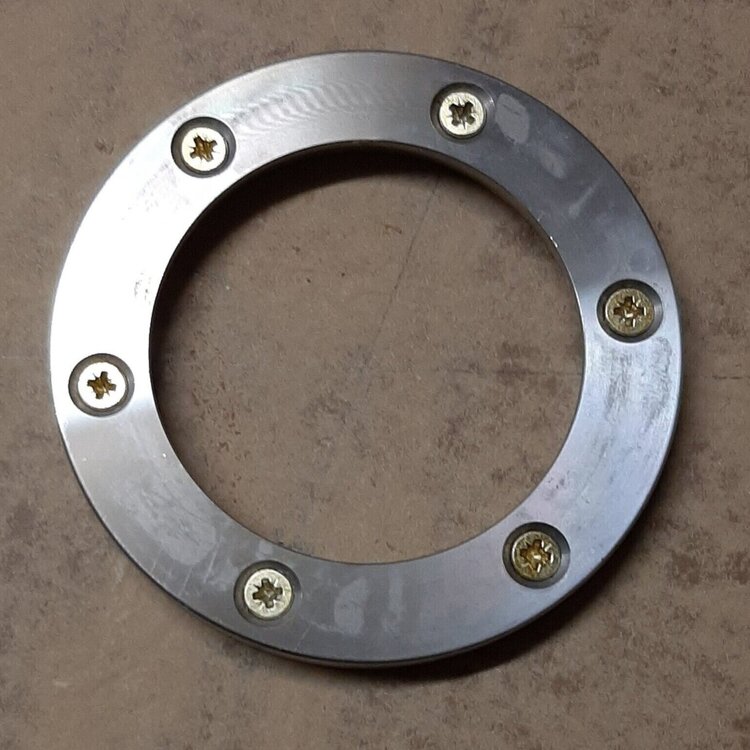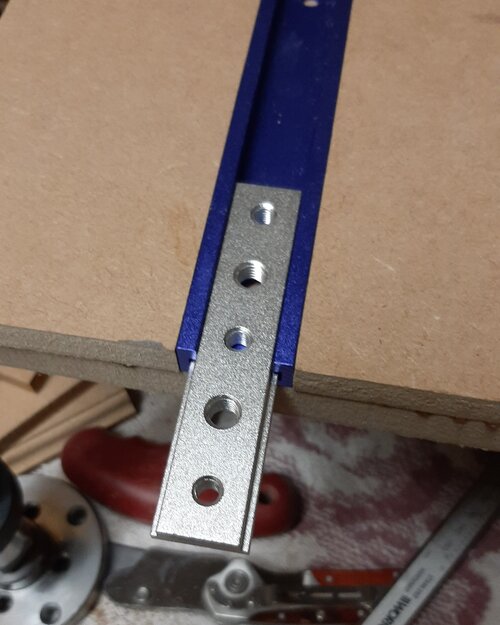Building a lathe mounted sanding table by Ted Higgs
For around 30 years I have been using my trusty Record Power 10” sanding disk in my workshop and even converted it from sticky back disks to hook and loop. But it has a very fast fixed speed, over 4000 revs. Unless great care was taken it would very quickly burn the wood and wear out disks. It also rotated clockwise whereas later sanding disk machines are anticlockwise which is less of a risk than having the upside of the disk next to you. It was also too easy to take more off than wanted.
I was finally inspired to do something about after watching one of Colwyn Way’s lockdown video demo’s and saw that he had a flat table that mounted in the tool post. I noticed that he had a plate underneath and guessed it was from Axminster Tools so I wondered if Father Christmas might make an early start and I persuaded the tea maker that this was an essential purchase together with a tool post and locking collar. See photo below. All of these things can be made from MDF, hardwood post and a hose clip but wooden tool posts suffer from locking bolt fatigue after a time.
I started with the sanding disk by mounting a C jaws ring on the back of a piece of leftover worktop and then cutting out a 10” section on the lathe with a parting tool. I then ‘sealed’ the rough edges with Star Wars tape (it has a light side and a dark side and holds the universe together) and then mounted a hook and loop backing which stuck very well on the worktop surface. A 120 grit disk finished it off.


I wanted a little more precision that just a flat top as I want to do more segmented work and so I decided to make the table with a T slot to take a sliding mitre fence. A little bit of research via Amazon and I found a 30cm T slot with a purpose made sled for around £11 including postage.
Instead of routing the slot on the MDF and because it needed to be double thickness anyway I decided to use the sandwich method by cutting two sections of MDF and gluing them either side of the track on the base section. I realised that the track was just slightly proud of standard 12mm board so it was easier to just run the router across the slot and skin 1mm off.


Next was the mitre fence to mount on the sled. To make it adjustable I needed a semi circular slot for a star bolt and so I mounted a piece of MDF on the lathe and cut out circles using the parting tool. I then cut the circle section in half and glued a square end onto the two half circles. After sanding on the Record disk to ensure very straight edges I glued the vertical guide plate in place. The mitre fence was the mounted onto the sled with some spacer washers to ensure that the bottom edge of the vertical fence would slide across the table with no play.






Setting up is very quick and simple as the table edges are perfectly parallel to the track so moving the tool rest banjo so that the table just touches the disk does the job. The fence can be set at any angle with a precision angle finder. I now have a sander that is variable speed and also goes anti-clockwise unlike the elderly Record which still perfect for rougher carpentry jobs.